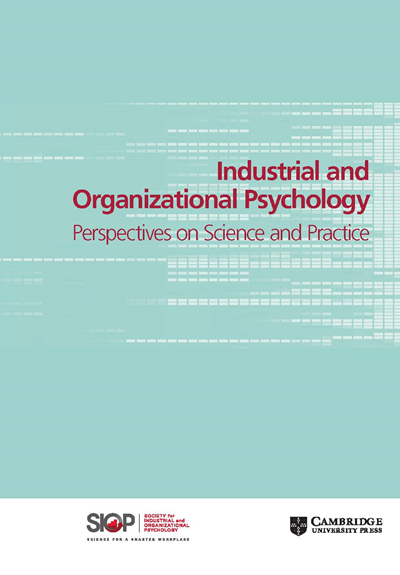需要一种了解创伤的方法来减少警察的不当行为
IF 4.3
3区 心理学
Q1 PSYCHOLOGY, APPLIED
Industrial and Organizational Psychology-Perspectives on Science and Practice
Pub Date : 2022-12-01
DOI:10.1017/iop.2022.82
引用次数: 0
摘要
Dhanani及其同事(2022)正确地承认了警察作为一种职业的压力性质,并强调了促进警察福祉的必要性,但作者和其他学者低估了创伤的作用及其对警务工作几乎所有方面的潜在影响。创伤不仅仅是工业组织(I-O)和职业健康心理学家通常研究的压力;它出现在“一个事件,一系列事件,或一组情况,对个人的身体或情感有害或危及生命,并对个人的功能和精神,身体,社会,情感或精神健康产生持久的不利影响”(SAMHSA, 2014, p. 7)。警察工作的性质要求他们长期暴露于潜在的心理创伤事件(ppte),也就是说,直接或间接遭受实际或威胁的死亡、重伤或性暴力(APA, 2013年)。此外,警察机构的组织文化往往是不支持的(Dhanani等人),警察报告的其他组织压力源水平非常高,包括不一致的领导风格、官僚主义的繁文缛节、缺乏资源、不公平/不一致的人事实践、不支持的同伴和不公平的工作量分配(Bikos, 2020;卡尔顿等人,2020;Ricciardelli et al., 2020)。组织压力源在警务中是一个问题,即使在控制了暴露于ppte之后,它们与精神健康障碍的关联甚至比操作压力源更强(卡尔顿等人,2020)。这些条件的融合是创伤后应激性损伤(PTSIs)发病的完美处方,包括创伤后应激障碍(PTSD)和创伤的亚临床标志,这两者在警察中都很丰富(Syed et al., 2020)。事实上,警察和其他公共安全人员的PTSD患病率估计为20-37%,而普通人群的患病率为3.5% (APA, 2013;Marmar et al., 2006)。I-O心理学家可能倾向于忽视创伤和这些统计数据,因为它们似乎属于临床心理学领域,但我们断言,如果我们的目标是为影响警察不当行为的科学和实践做出贡献,I-O心理学家就有必要将创伤的临床和神经生物学证据结合起来。此外,我们认为跨学科的合作——比如io心理学家、临床心理学家、精神病学家和神经生物学家之间的合作——对于解决如何减少种族暴力和其他形式的警察不当行为这一复杂问题至关重要。因此,在概述创伤知情方法之前,我们首先简要概述创伤的神经生物学性质。本文章由计算机程序翻译,如有差异,请以英文原文为准。
A trauma-informed approach is needed to reduce police misconduct
Dhanani and colleagues (2022) rightfully acknowledge the stressful nature of policing as an occupation and highlight the need to promote officer well-being, yet the authors and other scholars underestimate the role of trauma and the potential impact it has on nearly all aspects of policing. Trauma is not merely stress as industrial-organizational (I-O) and occupational health psychologists typically study it; it emerges from “an event, series of events, or set of circumstances, that is experienced by an individual as physically or emotionally harmful or life-threatening and that has lasting adverse effects on the individual’s functioning and mental, physical, social, emotional, or spiritual well-being” (SAMHSA, 2014, p. 7). The nature of police officers’ jobs requires them to experience chronic exposure to potentially psychologically traumatic events (PPTEs), that is, direct or indirect exposure to actual or threatened death, serious injury or sexual violence (APA, 2013). Moreover, police agencies’ organizational cultures are often unsupportive at best (Dhanani et al.), and officers report very high levels of other organizational stressors including inconsistent leadership styles, bureaucratic red tape, lack of resources, unfair/inconsistent personnel practices, unsupportive peers, and unfair workload distributions (Bikos, 2020; Carleton et al., 2020; Ricciardelli et al., 2020). Organizational stressors are such a problem in policing that they are even more strongly associated with mental health disorders than are operational stressors, even after controlling for exposure to PPTEs (Carleton et al., 2020). This confluence of conditions is the perfect recipe for the onset of posttraumatic stress injuries (PTSIs), including posttraumatic stress disorder (PTSD) and subclinical markers of trauma, both of which are abundant among police (Syed et al., 2020). Indeed, police and other public safety personnel have an estimated 20–37% PTSD prevalence rate, compared to the general population at 3.5% (APA, 2013; Marmar et al., 2006). I-O psychologists may be prone to dismissing trauma and these statistics because they seem to belong within the domain of clinical psychology, yet we assert that it is essential for I-O psychologists to incorporate clinical and neurobiological evidence on trauma if we aim to contribute to the science and practice of impacting police misconduct. Moreover, we believe that interdisciplinary collaborations—such as those among I-O psychologists, clinical psychologists, psychiatrists, and neurobiologists—are essential to address the complex problem of how to reduce racialized violence and other forms of police misconduct. We thus begin with a brief overview of the neurobiological nature of trauma before outlining a trauma-informed approach.
求助全文
通过发布文献求助,成功后即可免费获取论文全文。
去求助
来源期刊

Industrial and Organizational Psychology-Perspectives on Science and Practice
PSYCHOLOGY, APPLIED-
CiteScore
7.70
自引率
10.10%
发文量
85
期刊介绍:
Industrial and Organizational Psychology-Perspectives on Science and Practice is a peer-reviewed academic journal published on behalf of the Society for Industrial and Organizational Psychology. The journal focuses on interactive exchanges on topics of importance to the science and practice of the field. It features articles that present new ideas or different takes on existing ideas, stimulating dialogue about important issues in the field. Additionally, the journal is indexed and abstracted in Clarivate Analytics SSCI, Clarivate Analytics Web of Science, European Reference Index for the Humanities and Social Sciences (ERIH PLUS), ProQuest, PsycINFO, and Scopus.
 求助内容:
求助内容: 应助结果提醒方式:
应助结果提醒方式:


